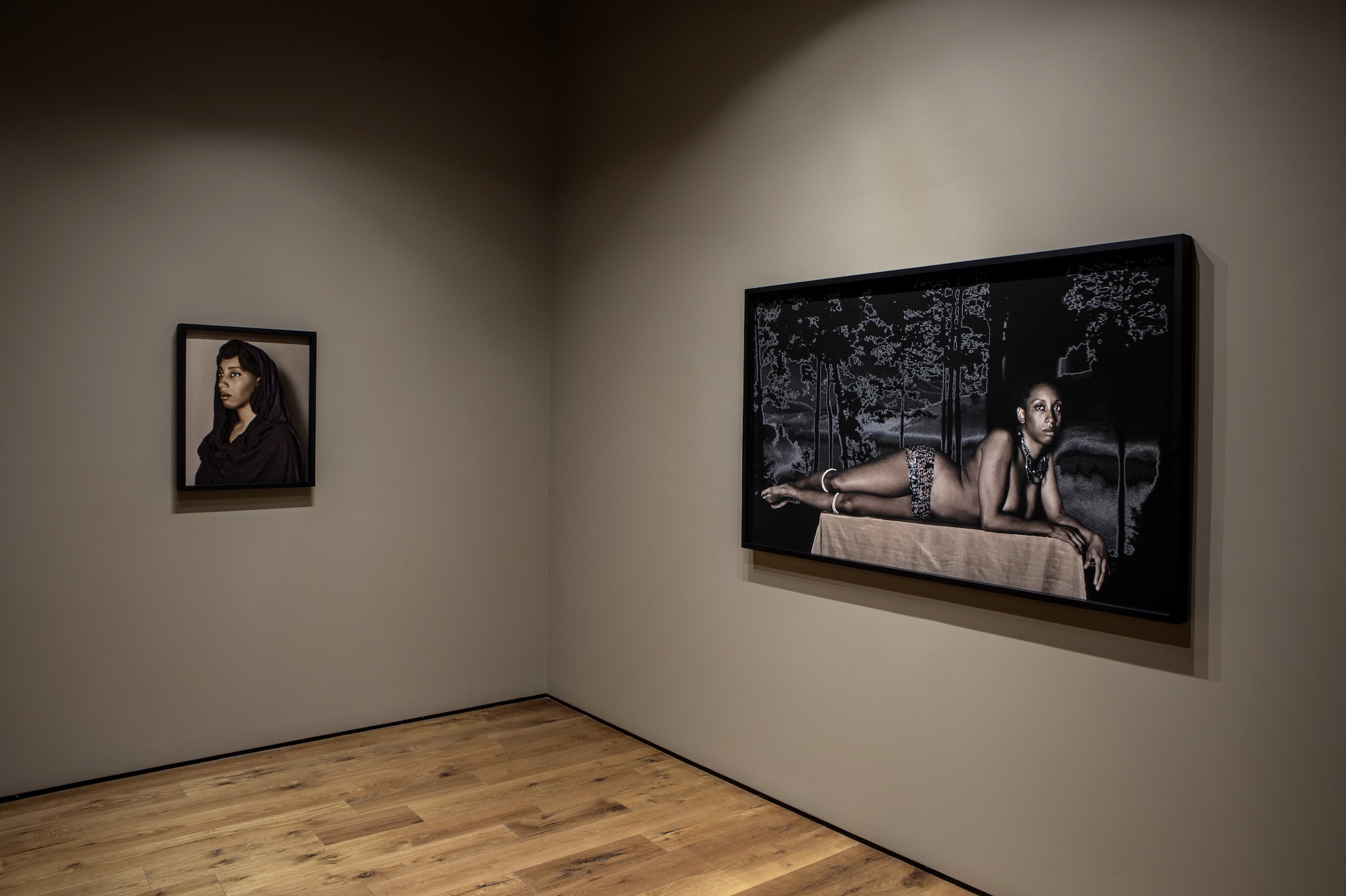
Review
'Invisible Threads Are The Strongest Ties' by Ayana V. Jackson at Mariane Ibrahim
by Mariel Vela
Reading time
5 min
In 2022, the Mariane Ibrahim Gallery celebrated its tenth anniversary. Since its inception in Chicago, the space has been dedicated to representing artists from the African diaspora and recently inaugurated its branch in Mexico City. Upon arrival, I noticed it also has a bookstore where editions revisiting the work of artists like Zohra Opoku, Amoako Bafo, and Clotilde Jiménez can be purchased. Under the title Mariane Ibrahim Publications, these books —with homogenously designed covers— express an interest in formulating theoretical and academic extensions of the gallery’s exhibition program, thus unfolding narrative coordinates. This is the kind of infrastructure that signals an understanding of all the necessary machinery required to advance a broader project, a motivation that seeks to shape other imaginations regarding the African diaspora, the tensions of a (sometimes present) colonial past, and a contemporary spirit.
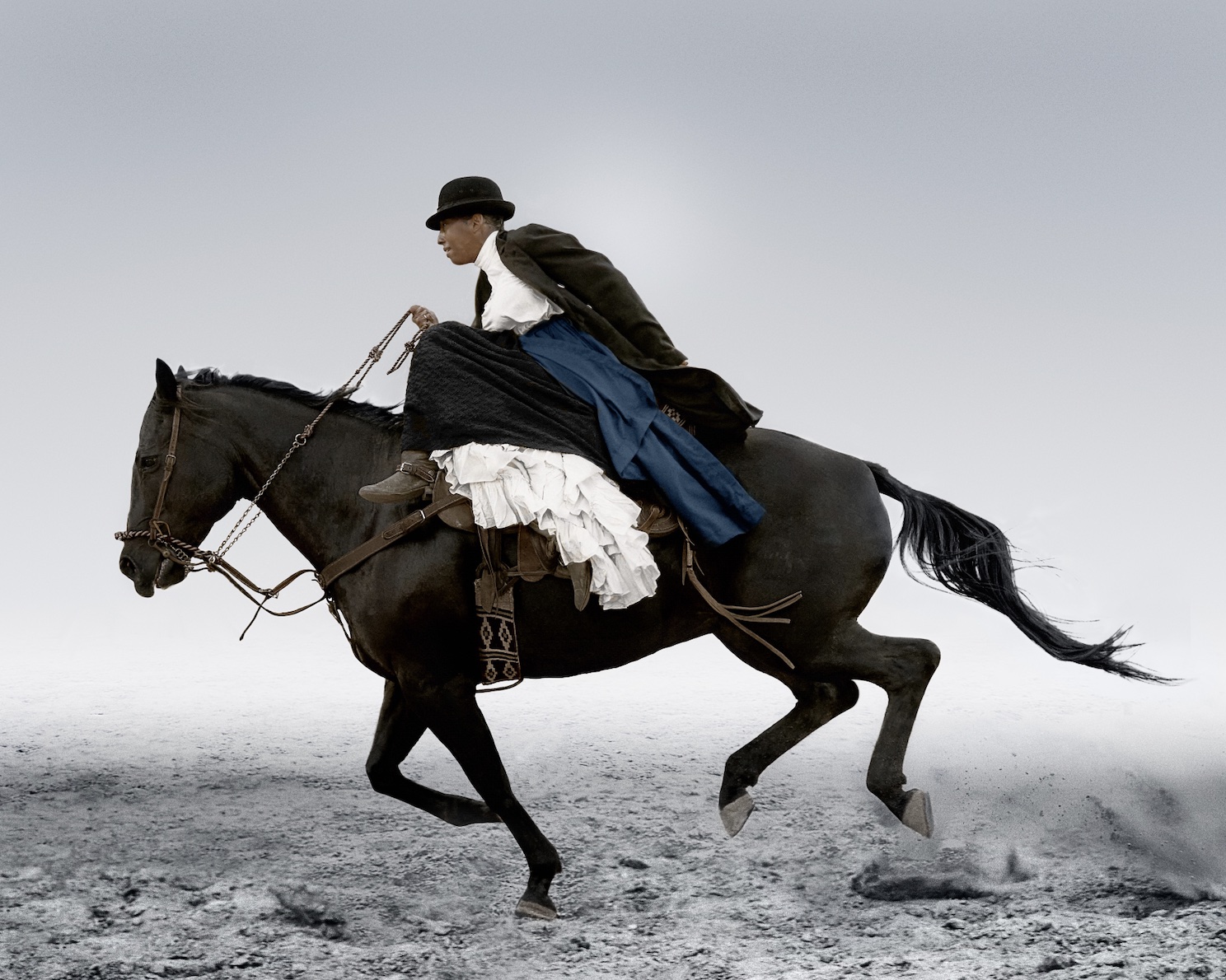
I had never encountered Ayana V. Jackson's photographs before, although there is something in her work that evokes colonial archive images, making it strangely familiar. Portraits, both in painting and photography, have historically been a way of recording a person's existence, of framing a narrative about the future of their image. I think of the women of the Renaissance, holding opossums close to their bellies to invoke their pregnancies, or the pearls that accentuated their purity. Portraiture has always been intensely related to the European concern with producing an ordering of social classes, of serving as testimony to the prevalence of their customs and symbols. However, with the advent of the daguerreotype, the practicality offered by photography made it the preferred medium for cataloging people in colonized countries. It was through portraiture that a more efficient administration of their images and bodies was developed.
Invisible Threads Are The Strongest Ties is Ayana V. Jackson's first exhibition in Mexico. It brings together a decade of work in different series. I begin with some photographs from Archival Impulse (2011-2013) in which Jackson reveals recurrent characteristics in the photographic language of the 19th and 20th centuries during colonial expansion. Beyond the corsets that cinch waists and the floral patterns of the clothing worn by the women portrayed, it is their poses that not only question, but also intervene, upon the past. In WHAT WILL YOU TELL THEM ABOUT ME? / DO YOU FEEL PAIN? (2013), a woman is depicted lying on a table with bare breasts, necklaces around her neck and thighs. It alludes to paintings like La maja desnuda by Francisco Goya or La Venus del espejo by Diego Velázquez, but instead of being in the privacy of the room of an upper-class woman, it is set against a background representing a kind of natural landscape; an acidic screen showing the negative of disintegrating trees. She looks at us looking at her, and it is in this exchange that the question unfolds: "What will you tell them about me?" About this body that, with its pose, recreates the fiction of innate proximity to nature.
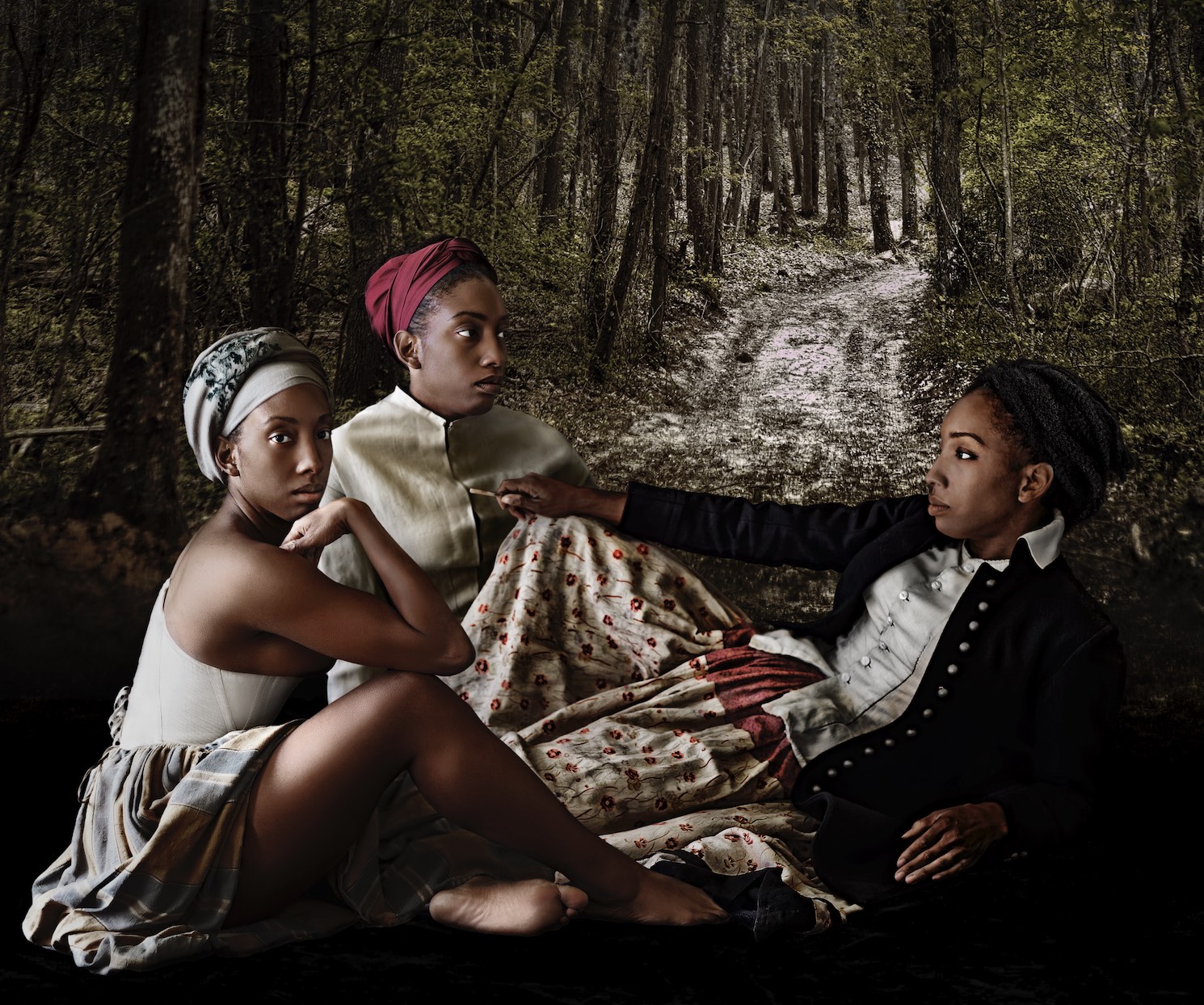
The photograph JUDGMENT OF PARIS (2018) evokes Manet's painting Déjeuner sur l'herbe through the languid poses of the subjects, a scene of modern leisure. It is with their bodies that they become able to inhabit the contours of history. A history that can be reinvented and reconfigured in the present. Every archival image has a hinge of fiction that never ceases to be, and it is through Jackson's work that the mutability of the past is revealed.
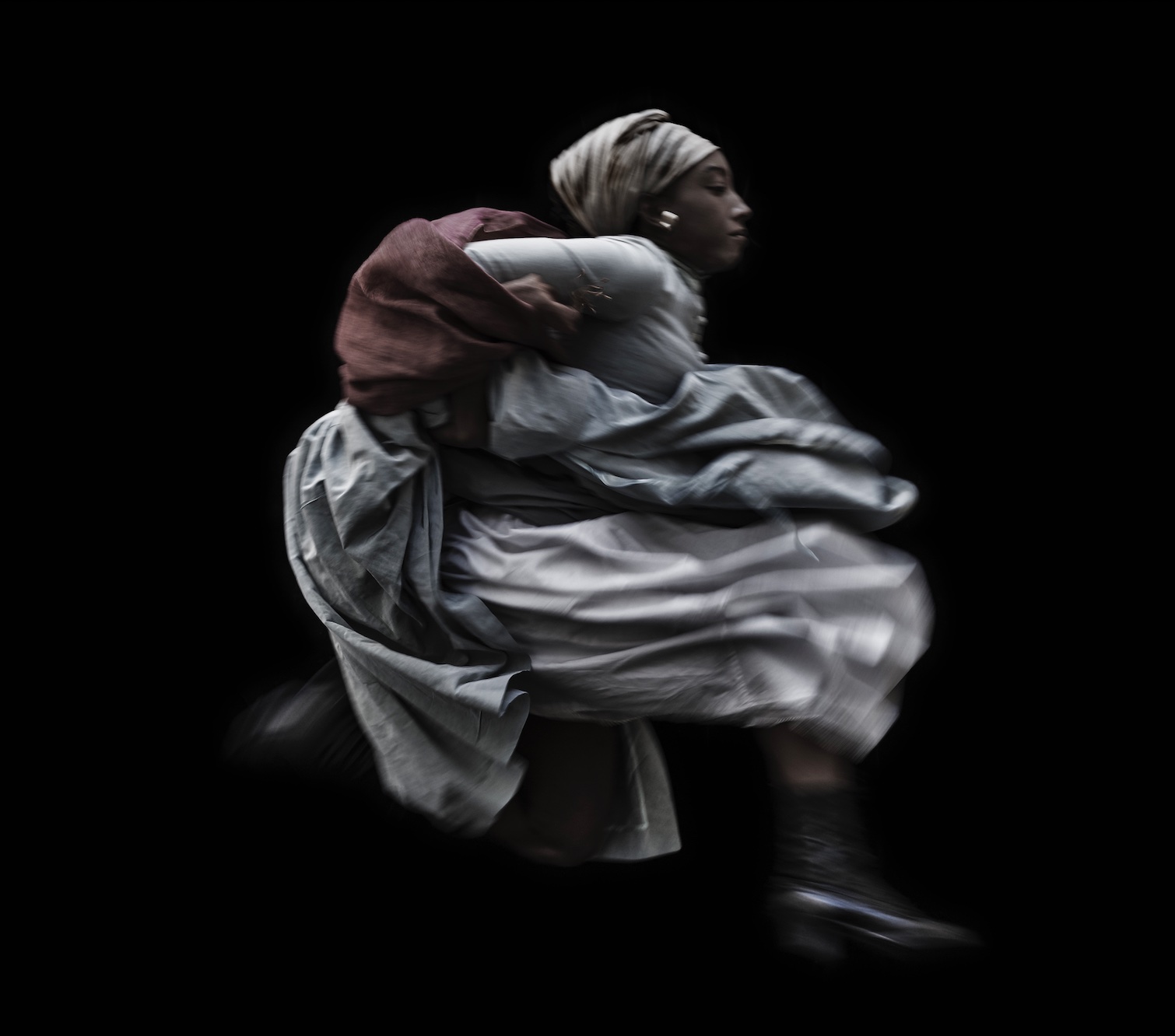
The series Intimate Justice in the Stolen Moment continues this exploration of poses, specifically of women's bodies in movement. I am struck by the backgrounds that decontextualize them, black backgrounds that seem to emancipate them from history. Outside of their clothes, there is no sign indicating where they are, and I suspect it is not important; only the lightness of their dances endures. This series also includes the only video in the exhibition, titled COMPARED TO WHAT (2017), in which a woman proceeds to dress and undress in front of the camera. We see all the attire of a Western woman from the 19th century: corsets, crinolines, petticoats, and hip pads, while a song that evokes the story of Sarah Baartman, known as the Hottentot Venus, plays in the background. The woman's movements have that spasmodic quality characteristic of early films, shot at 16 frames per second and projected at 24 frames per second. Accelerated, the movements endow any action with a slightly comic character. A subtle smile appears on the face of the woman dressing and undressing, clouding any pretension of projecting eroticism onto her actions; she refuses to be objectified.
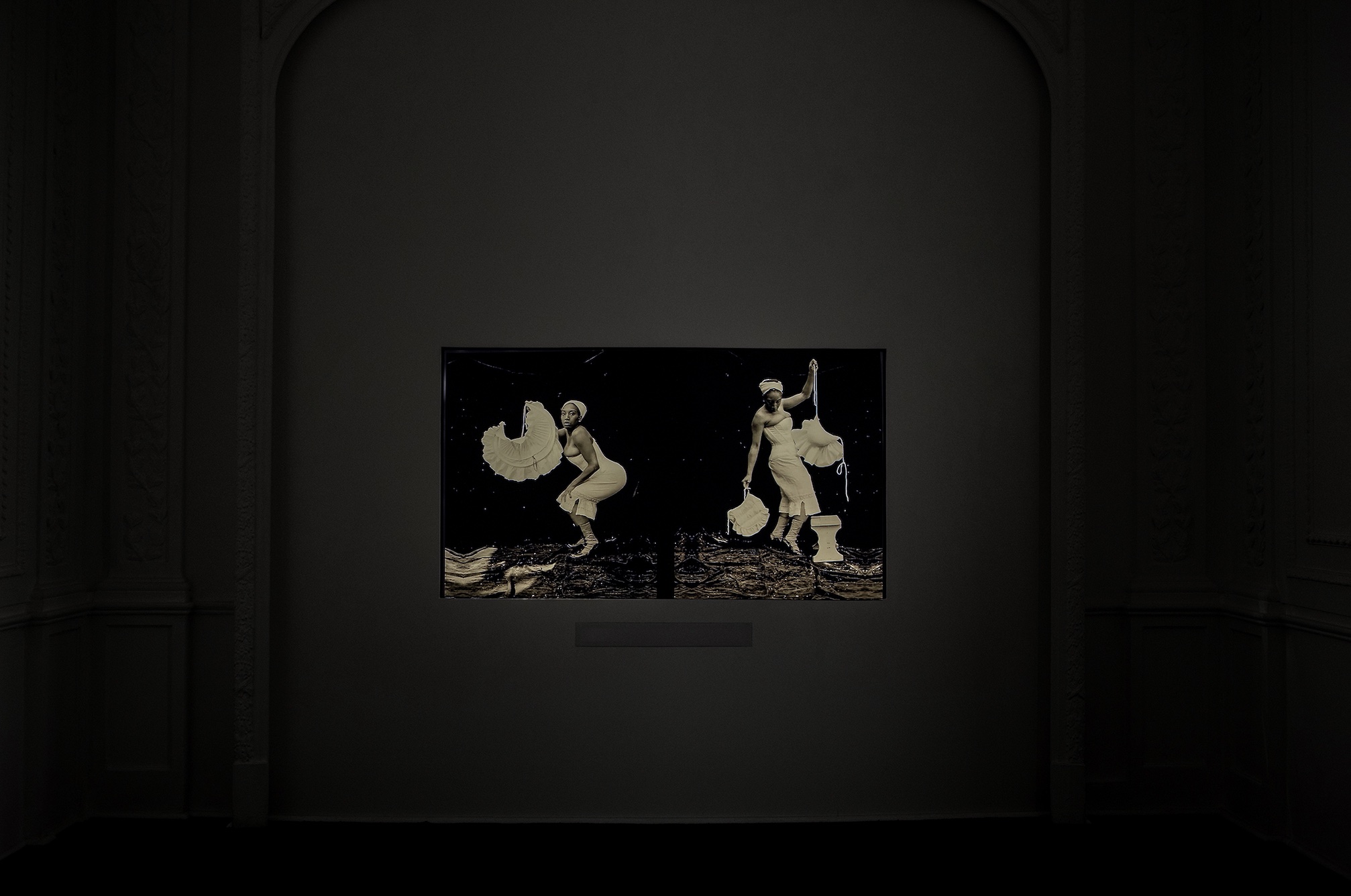
The invisible threads are those that interweave among the images created by photographer Ayana V. Jackson. Images that she reinvents to forge new imaginations, the revelation of all the different futures that the past still carries.
Translated to English by Sebastián Antón-Ojeda
Published on December 9 2023